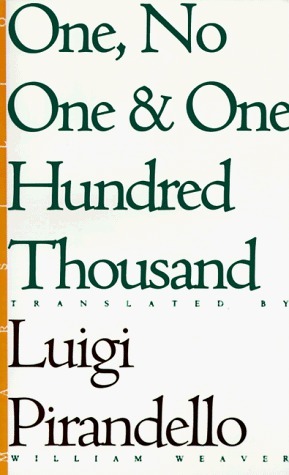
One, No One and One Hundred Thousand Summary of Luigi Pirandello's Book

Book Summary: One, No One and One Hundred Thousand by Luigi Pirandello
One, No One and One Hundred Thousand is a thought-provoking novel by Italian author Luigi Pirandello, first published in 1926. It belongs to the genres of Classics, Fiction, and Italian Literature. The novel delves into themes of identity, perception, and the human condition, showcasing Pirandello's mastery in exploring the complexities of human nature.
Characters
The protagonist of the novel is Vitangelo Moscarda, a man who embarks on a journey of self-discovery after his wife casually mentions that his nose tilts to the right. This seemingly insignificant comment triggers a profound realization for Moscarda, as he comes to understand that his identity is shaped by the perceptions of those around him. Other characters in the novel play supporting roles in Moscarda's quest for self-awareness, each contributing to his evolving understanding of himself.
Detailed Summary
The novel opens with Moscarda's wife pointing out the asymmetry in his nose, setting off a chain of events that unravel his sense of self. Moscarda becomes obsessed with the idea that he is not who he thought he was, leading him to question his identity and the various personas he presents to the world. As he attempts to confront the multiple versions of himself that exist in the eyes of others, Moscarda spirals into a state of confusion and despair.
Throughout the novel, Moscarda's interactions with different characters highlight the fluidity of identity and the inherent disconnect between one's self-perception and how others perceive them. His desperate search for an authentic self leads him to experience a series of bizarre and surreal events, each pushing him further towards madness. Ultimately, Moscarda finds a sense of liberation in embracing the idea that he is simultaneously no one and everyone, freed from the constraints of societal expectations.
Analysis
One, No One and One Hundred Thousand is a profound exploration of the human psyche and the complexities of identity. Pirandello skillfully weaves together themes of perception, communication, and existentialism to create a narrative that is both thought-provoking and humorous. The novel challenges readers to question the nature of truth and reality, inviting them to reflect on their own sense of self and how it is shaped by external influences.
Pirandello's use of irony and satire adds layers of depth to the novel, highlighting the absurdity of the human condition and the inherent limitations of our understanding of ourselves. Through Moscarda's journey of self-discovery, Pirandello invites readers to consider the ways in which we construct our identities and the impact of societal norms on our sense of self.
To conclude, One, No One and One Hundred Thousand is a masterful work of literature that continues to resonate with readers today. Its exploration of identity, perception, and free will is timeless, offering a profound commentary on the human experience. Pirandello's brilliant storytelling and thematic richness make this novel a must-read for literary enthusiasts.
If you enjoyed this summary, we encourage you to purchase the complete book to delve deeper into the intricacies of Pirandello's narrative. Alternatively, you can also listen to the audiobook version for a captivating literary experience. "One, No One and One Hundred Thousand" is a timeless classic that will leave a lasting impact on those who engage with its profound themes and engaging storytelling.
9780941419741 (ISBN10: 0941419746)






Related Books